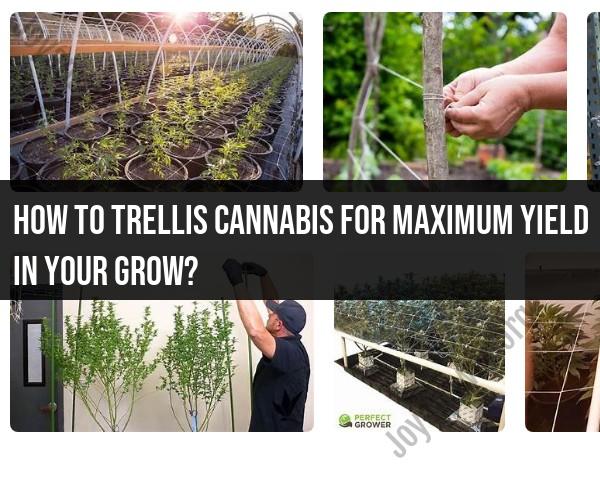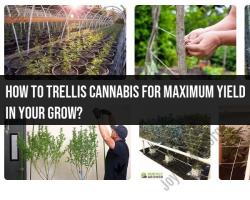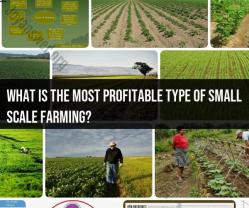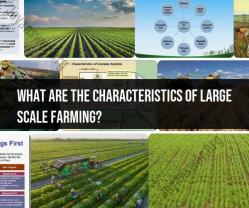How to trellis cannabis for maximum yield in your grow?
Trellising cannabis can significantly enhance yield by optimizing light exposure, airflow, and supporting the plants as they grow. Here's a guide to trellising techniques for maximizing cannabis yield in your grow:
Choose the Right Trellis System: There are various trellising systems available, such as vertical screens, horizontal grids, or adjustable netting. Select a system that suits your grow space and allows for easy access to the plants.
Start Early: Begin trellising early in the vegetative stage when the plants are still young. This helps train them to grow in a desired shape and encourages lateral growth.
Create an Even Canopy: Use the trellis to encourage an even canopy by spreading out the branches. This ensures that all parts of the plant receive adequate light and reduces shading of lower buds.
Support Heavy Buds: As the plants mature, the weight of the buds can cause branches to bend or break. Trellising helps support these heavy buds, preventing damage and maximizing their growth potential.
LST (Low-Stress Training): Utilize techniques like Low-Stress Training to bend and tie down branches to the trellis gently. This encourages the growth of multiple colas and ensures an even distribution of bud sites.
Regular Maintenance: Monitor the plants regularly and adjust the trellis as needed. As the plants grow, they might require repositioning or additional support.
Optimize Airflow: Proper spacing of branches facilitated by trellising allows for improved airflow between plants, reducing the risk of mold or mildew and promoting healthier growth.
Use Trellis for SCROG (Screen of Green): SCROG involves filling the entire grow area with a horizontal screen or netting. This method allows for maximum light penetration and encourages the growth of multiple colas, resulting in higher yields.
Adapt to Plant Growth: Be flexible with your trellising techniques. Cannabis plants can grow at different rates, so adjust the trellis to accommodate their growth patterns.
Harvest Considerations: During the late flowering stage, it's essential to support the weight of the buds to prevent them from bending or breaking. A sturdy trellis system will ensure that the plants remain healthy until harvest.
Remember, each strain and growing environment may require different trellising approaches. Observing the plants and adapting your trellis system accordingly will help maximize the yield effectively.
Trellising is a widely used technique in cannabis cultivation that offers numerous benefits for plant growth and overall yield. By providing a support structure for cannabis plants to climb and grow vertically, trellising enhances light penetration, improves air circulation, and promotes better bud development.
Benefits of Trellising Cannabis
Improved Light Penetration: Trellising allows for better distribution of light throughout the canopy, ensuring that even the lower branches receive adequate light for photosynthesis. This increased light exposure leads to improved bud development and overall yield.
Enhanced Air Circulation: Trellising promotes better airflow through the cannabis canopy, reducing the risk of moisture buildup and preventing mold and mildew growth. Improved air circulation also helps to strengthen stems and reduce the risk of lodging.
Promotes Bud Development: Trellising helps to support the weight of heavy buds, preventing them from breaking or bending under their own weight. This support allows buds to develop to their full potential, resulting in larger, denser yields.
Manages Plant Growth: Trellising provides a controlled environment for cannabis plants to grow, allowing growers to manage their growth habit and maximize space utilization. This technique is particularly beneficial for indoor cultivation where space is limited.
Selecting the Appropriate Trellis Material and Design
The choice of trellis material and design depends on the size and growth habit of the cannabis plants. Common trellis materials include:
Netting: Netting is a versatile and lightweight option that is easy to install and maintain. It provides adequate support for most cannabis strains.
Horizontal Strings: Horizontal strings are a simple and effective option for supporting smaller cannabis plants. They can be easily adjusted to accommodate plant growth.
Vertical Stakes: Vertical stakes are typically used in conjunction with horizontal strings or netting to provide additional support for larger plants or heavy branches.
Installing and Maintaining the Trellis System
Effective installation and maintenance of the trellis system are crucial for maximizing its benefits and ensuring plant health. Here's a general guide:
Installation: Install the trellis system early in the vegetative stage of the cannabis plants, allowing them to grow into the support structure as they mature.
Spacing: Ensure adequate spacing between the trellis support points to allow for proper plant growth and airflow.
Adjustment: Regularly adjust the trellis system as the plants grow to provide continuous support.
Pruning: Prune away any excess foliage that may obstruct light penetration or hinder airflow.
Maintenance: Check the trellis system regularly for damage or wear and tear, and make repairs as needed.
By implementing trellising techniques effectively, cannabis growers can enhance light penetration, improve air circulation, promote bud development, and ultimately achieve higher yields.








